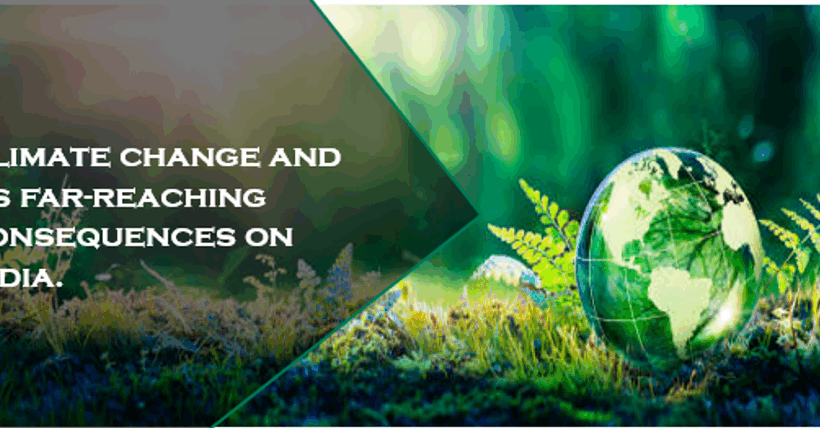The phenomenon of climate change represents one of the most pressing challenges of our time. As the planet warms, its ramifications extend far beyond mere fluctuating temperatures; they infiltrate ecosystems, economies, and communities across the globe. The question beckons: What happens when our world, which has traditionally thrived on balance, is nudged off the precipice into an era of unpredictable extremes?
Imagine a world where familiar seasons fade into a blend of erratic weather patterns. While warmer winters may sound appealing to some, they pose a more significant threat by intensifying weather extremes. The simple delight of a mild February day obscures a more insidious reality: rising global temperatures can lead to devastating heatwaves in summer, disrupt growing seasons, and ultimately threaten food security. Such extreme fluctuations in climate predict cascading effects on agriculture, with staples like wheat, corn, and rice becoming increasingly vulnerable to pests and diseases. As these crops falter, what alternatives will communities turn to for sustenance?
One cannot discuss climate change without addressing its aggressive impact on water resources. Increasing temperatures accelerate evaporation rates from lakes, rivers, and soil, leading to a pervasive water crisis. This hydrological imbalance has dire repercussions; more than two billion people globally already face water scarcity. In regions where precipitation patterns have become less reliable, water quality diminishes, catalyzing conflicts over dwindling supplies. As nations grapple with the exigencies of water access, how will they adapt to societal shifts that may arise from these tensions?
Moreover, climate change does not discriminate; it magnifies pre-existing inequalities. Vulnerable populations, particularly in developing nations, are disproportionately affected. They often lack the resources to adapt, facing threats from rising sea levels and increasingly severe storm surges. Coastal cities, especially in low-lying areas, might find their very existence challenged. Herein lies a perplexing dilemma: how can affluent nations that have historically contributed to greenhouse gas emissions assist those that are on the front lines of climate impacts while navigating their own adaptation pursuits?
The degradation of biodiversity presents another facet of the warming world. Ecosystems, once teeming with diverse species, are gradually transformed as habitats shift due to climate change. As temperatures rise, many species find themselves in a quandary: migrate or face extinction. The delicate balance of our planet’s web of life hangs in the balance, once again raising the question of responsibility. Who will safeguard the myriad of life forms that depend on stable environments? Furthermore, how will the disappearance of certain species ripple through food chains and ecosystems, potentially leading to unforeseen consequences for human populations?
The economic implications of a warming world cannot be overstated. From agriculture to tourism, various sectors confront a volatile future. Agriculture, as aforementioned, faces obsolescence of traditional farming practices due to erratic weather. However, beyond agriculture, industries like fishing and forestry are feeling the effects of shifting ecosystems. Fish populations migrate as ocean temperatures change, displacing local fishing industries. If this situation persists, the economic plants that once flourished in coastal towns may wilt under pressure. How can economies strategize for sustainability amid such upheaval?
Furthermore, infrastructure is increasingly threatened in a world where storm intensity grows. Extreme weather events such as hurricanes, floods, and wildfires devastate communities and escalate repair costs to astronomical levels. Cities must reassess their construction practices, focusing on resilience. Will urban planners embrace innovative designs that not only withstand assaults from nature but also restore ecological balance? Investing in green infrastructure is vital, yet often perceived as a costly venture. How can we reconcile immediate financial burdens with the urgent need for a sustainable future?
On the global stage, climate change prompts a re-evaluation of treaties and policies. The Paris Agreement has ignited conversations worldwide, yet the gap between commitments and action highlights an urgent need for accountability. Nations must transition from simply pledging to participate in climate initiatives to executing actionable plans. How can global cooperation be fortified to tackle climate change effectively? It demands an embrace of novel solutions and collaborative frameworks that transcend traditional borders.
Nevertheless, amidst these daunting challenges resides an opportunity for innovation and regeneration. Renewable energy sources, like solar, wind, and geothermal power, present a pathway to mitigate reliance on fossil fuels. In addition, the proliferation of electric vehicles and sustainable practices within urban environments reveals a burgeoning commitment to just transition. Could an investment in green technology hold the key to both economic revitalization and climate stabilization?
As we delve deeper into the warming world, the question of individual and collective responsibility resonates louder than ever. Citizens must cultivate awareness and advocate for policies that address climate change at local, national, and international levels. From reducing waste to educating others about sustainable practices, individual actions contribute to larger systemic changes. Can a concerted effort toward sustainability empower communities to reclaim a healthier planet for future generations?
In conclusion, the warming world we inhabit is fraught with challenges, yet it is also ripe with potential. By examining the far-reaching consequences of climate change, we are compelled to confront the intertwined fate of humanity and the planet. The path forward hinges upon collaboration, adaptation, and an unwavering commitment to a sustainable future. The stakes could not be higher, reminding us that action, rather than indifference, will determine the legacy we leave behind.






